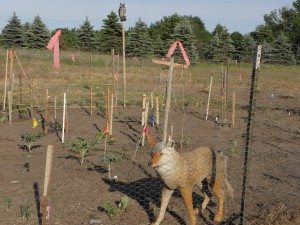By Glen Wunderlich
With the Michigan Department of Natural Resources’ (DNR) and Agriculture and Rural Development’s (MDARD) confirmation of chronic wasting disease (CWD) in a free-ranging deer in Meridian Township earlier this month, deer hunting, as we’ve known it in the surrounding area, is about to change drastically based on the state’s surveillance and response plan for the disease.
There is no easy way out of this dilemma and options to control the spread of the disease are going to be brutal. Actions the DNR will take include the following immediately:
- Completing a population survey in the area where the CWD-positive deer was found.
- Establishing a Core CWD Area consisting of Alaiedon, Delhi, Lansing, Meridian, Wheatfield and Williamstown townships in Ingham County; Bath and DeWitt townships in Clinton County; and Woodhull Township in Shiawassee County. Unlimited antlerless deer hunting licenses will be available. Mandatory checking of deer will be required in this area during hunting seasons and restrictions will apply to the movement of carcasses and parts of deer taken in this area.
- Creating a CWD Management Zone, which will include Clinton, Ingham and Shiawassee counties.
- Implementing a deer and elk feeding and baiting ban, which will include the Core CWD Area and the larger three-county CWD Management Zone. Provisions of the baiting ban are as follows:
All grains, minerals, salt, fruits, vegetables, hay, or any other food materials, whether natural or manufactured, which may lure, entice or attract deer are prohibited. This ban does include mineral and salt blocks, but does not include natural or manufactured lures/scents that are not “food materials”. Food plots are not subject to the ban.
- Prohibiting the possession or salvage of deer killed by collision with a motor vehicle within the Core CWD Area. Also, residents are asked to call in the locations of road-killed deer within this area so DNR staff can pick up for testing. Research shows CWD-infected deer are more likely to be hit by vehicles because of their illness.
Some chronically CWD-infected animals will display abnormal behaviors, progressive weight loss and physical debilitation. There is no cure; once a deer is infected with CWD, it will die.
The DNR asks help from the public and hunters in reporting deer that are unusually thin or exhibiting unusual behavior (for example, acting tame around humans and allowing someone to approach).
To report a suspicious-looking deer, call the DNR Wildlife Disease Lab at 517-336-5030 or fill out and submit the online observation report found on the DNR website.
To report road-kills found in the Core CWD Area call the Wildlife Disease Hotline at 517-614-9602 during office hours and leave a voicemail with location information.
CWD is also transmitted indirectly from contaminated items in the environment such as soils where it persists for decades. Where the disease becomes established, environmental contamination likely drives CWD outbreaks perpetually. Once CWD is established in an area, all methods tried to date have failed to eradicate the disease.
Density reductions should target entire family groups (does and their fawns) to minimize the probability of disease persistence, and yearling bucks to minimize the probability of disease spread via dispersal.
Once established, CWD outbreaks can be expected to last for decades. If hunters do not kill a sufficient number of cervids to provide an adequate sample, DNR should collect additional samples via designating special hunts, landowner shooting permits, agency-directed culling and/or other methods as deemed necessary.
In southern Wisconsin, CWD is endemic, increasing in prevalence at a rate of 4% per year, with the affected geographic area continuing to expand.
In contrast, New York discovered CWD in 2005 in the free-ranging deer population. Initial surveillance found only one positive free-ranging deer and subsequent surveillance has thus far failed to detect additional infected deer in the wild. The swift, aggressive response (which included agency culling and enhanced opportunistic, targeted, and hunter-harvested surveillance efforts) taken by the wildlife agency appears to have occurred prior to CWD becoming established in the population. While it is still too early to determine if CWD has been eradicated entirely, New York’s response may have at least limited its spread.
That may the best we can hope for in Michigan, as well, but it’s going to be rough road ahead.






